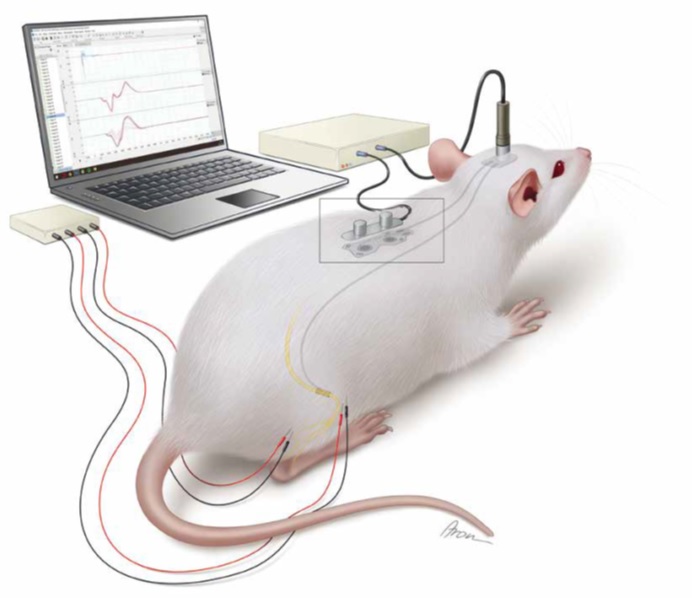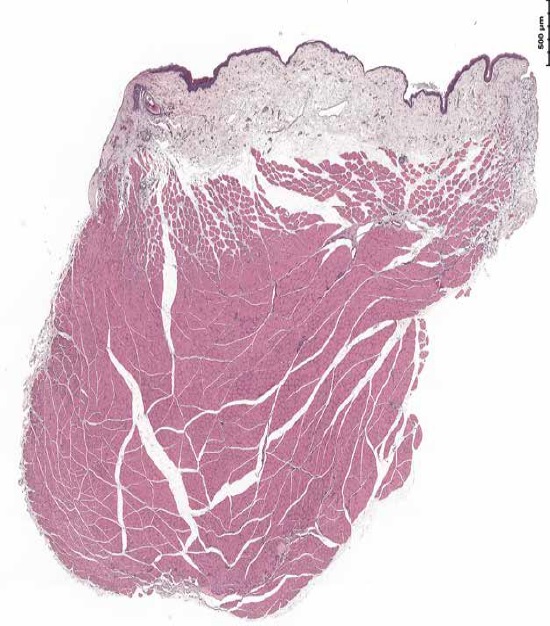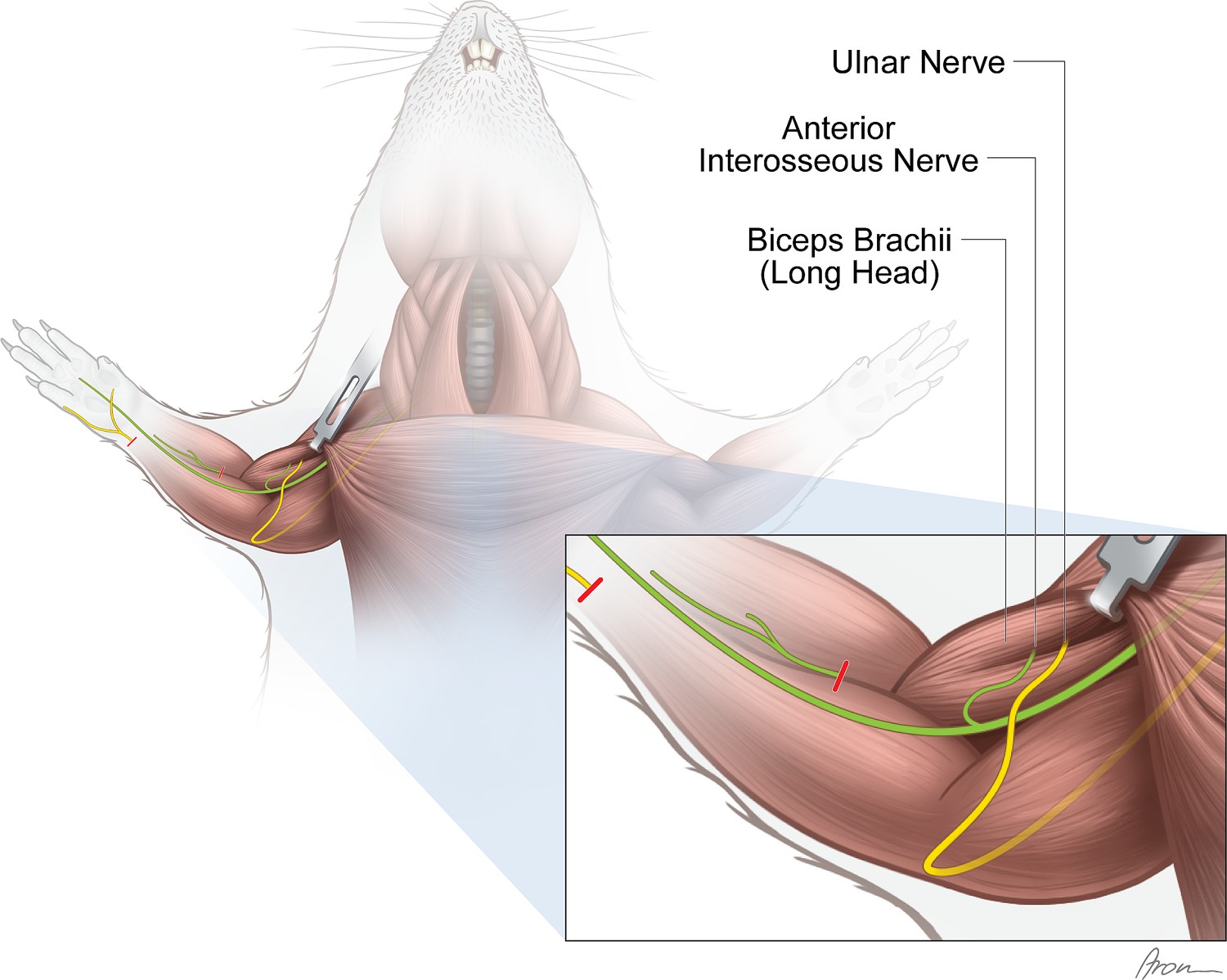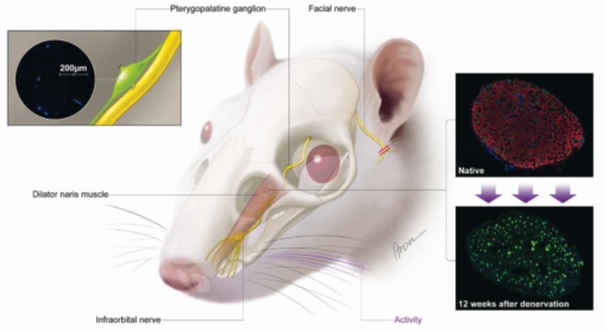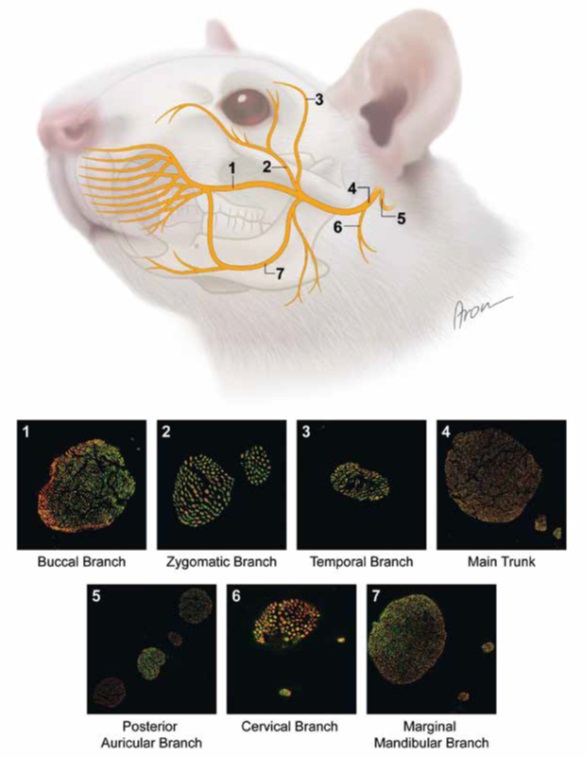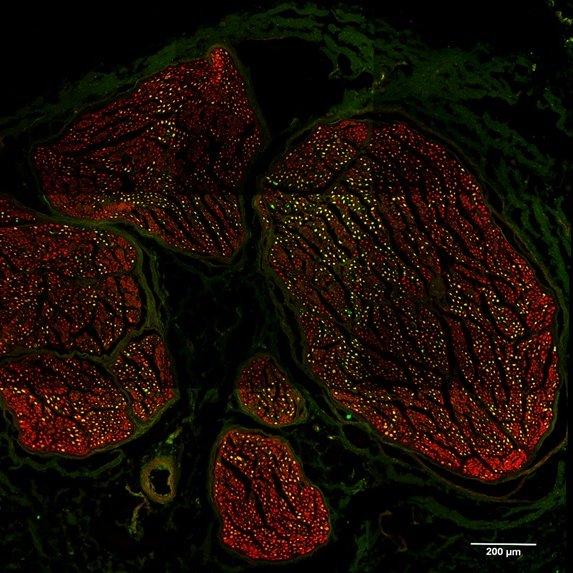Basic Science Projects
The future of interfaces in bionic reconstruction – a fully implantable myoelectric system
Modern prosthetic devices face limitations in reliably extracting signals from the body for advanced extremity control. Therefore, we conducted an evaluation of a fully implantable myoelectric system in collaboration with Ripple Neuro, which involved both cadaver and large animal studies, revealing mechanical stability, functionality, and outstanding EMG signal quality in various muscles.
Stimulation of an implanted nerve electrode using transcutaneous coupling in a rat sciatic nerve model
To explore the possibility of sensory feedback through peripheral nerve interfaces in order to create a new method for wireless communication and stimulation in a myoelectric prosthesis, we are investigating the biocompatibility and reliable coupling properties of an implanted nerve electrode employing capacitive coupling in a rat sciatic nerve model in collaboration with CorTec GmbH and the University of Freiburg.
Targeted Sensory Reinnervation in bionic reconstruction: an experimental animal model
While lack of clinically available approaches to restore sensory feedback remains a major concern for many amputees, the process of targeted sensory reinnervation (reinnervation of skin overlying a muscle after targeted muscle reinnervation) may open up new possibilities to restore sensory perception. To establish a novel, clinically feasible and biological sensory interface, we are investigating a new approach by utilizing nerve transfers together with a glabrous skin transplant in a rat model at a structural, electrophysiological and psychophysical level.
Multiple Nerve Transfers Develop Distinct Innervation Territories
In order to create a “Bio-Screen” for high fidelity prosthetic control by increasing the resolution of neural signaling we are performing multiple nerve transfers to a single target muscle in a rat model, which are subsequently analyzed with EMG assessments as well as retrograde labeling.
Spontaneous autonomic reinnervation of neuromuscular junctions after surgical deefferentation: experimental animal model
Surgical approaches for restoring muscular motor function primarily focus on efferent reinnervation of neuromuscular junctions, while the impact of afferent and autonomic fibers on muscular function is scarcely explored. We initiated a project to investigate spontaneous autonomic reinnervation of facial muscles independent of the facial nerve in a rat model.
Novel nerve transfer to the sterno(cleido)mastoid muscle: an experimental animal model for proprioceptive reinnervation
The challenge of restoring sensory feedback in bionic reconstruction remains a significant issue. To address this, we have developed a novel nerve transfer model in rats to explore the potential implementation of proprioceptive feedback in upper extremity bionic reconstruction, which lets us investigate alterations in a skeletal muscle with high density of proprioceptive organs after reinnervation with a mixed nerve by performing assessment using ENG and EMG measurements as well as immunohistochemical staining.
Axonal Quantification of Peripheral Nerves
A recent study found that only about 10% of axons originating from the spinal cord and innervating the human upper limb are motor neurons, emphasizing the importance of sensory information. To expand on this research, we conducted a study to quantify the axonal composition of radial and ulnar nerve branches in the human forearm as well as the nerves in the lumbosacral plexus innervating the lower limb.


